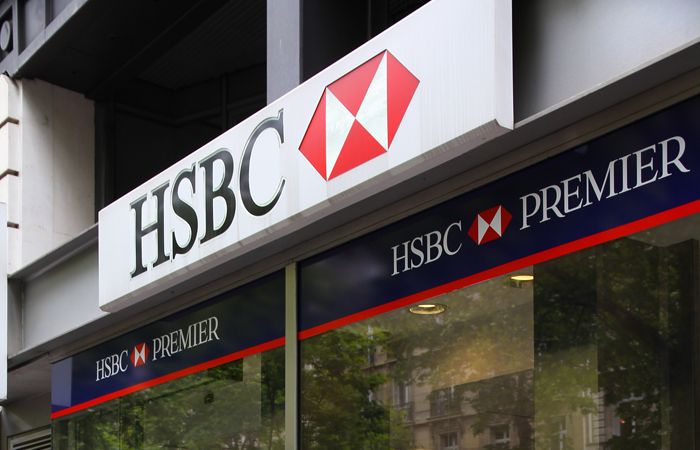
Homebuyer demand, agreed sales and new instructions all fell last month, in what the Royal Institution of Chartered Surveyors described as a “subdued” market.
House prices slipped further across all regions of the country, with the sharpest decline in the East Midlands and South East, the body’s January UK Residential Survey shows.
In the rental market, tenant demand rose at the same time as landlord instructions fell.
The report says: “Near-term expectations suggest this picture is likely to remain in place for a while longer as the market adjusts to higher interest rates in the UK.”
The surveyors’ report says the net balance for new buyer enquiries slipped to -47% in January, down from a reading of -40% the month before, the ninth successive negative monthly reading for new enquiries.
Survey respondents continued to see “a pull-back in the volume of fresh listings” coming onto the market, with a net balance of -14% of contributors reporting a decline in new instructions last month.
It adds that its latest indications point toward another national monthly decline for house prices, with the January net balance softening further to -47% compared to a reading of -42% previously.
However, looking ahead over the next twelve months, the study says “the sales outlook does not appear to be quite as downcast as before, with the net balance moving to -20% compared to a much weaker reading of -42% seen in December”.
In the lettings market, tenant demand continues to increase according to a net balance of +43% of respondents nationally.
At the same time, landlord instructions fell again, with the latest net balance reading of -14%, the 10th straight quarter it has reported a fall.
Around 64% of survey participants say that build-to-rent homes will play a bigger role in the supply and product mix of the rental market going forward.
But the largest share of respondents, 48%, add that build-to-rent “will only be somewhat successful in filling the supply shortfall in the market longer term”.
Rics chief economist Simon Rubinsohn says: “Although some respondents to the January Rics survey have noted a little more interest in the housing market as the new year got underway, the overall tone of the feedback still remains subdued which is not altogether surprising given the jump in mortgage rates since the autumn.
“Prices, meanwhile, are now beginning to reflect the shift in the balance between demand and supply.
“However, it is questionable how much downside to pricing there is likely to be given that recent macro forecasts from the Bank of England and others are now envisaging a less harsh economic environment this year.
He adds: “Meanwhile, the rental market continues to show strong interest from tenants and limited stock available which is keeping a firm momentum on rental growth.
“While build-to-rent clearly has a role to play in helping to fill this gap, the insights from the latest survey suggest that this is not going to be sufficient, at least in the near term, to address the challenge in this market.”
Hargreaves Lansdown senior personal finance analyst Sarah Coles says: “January was deathly for the property market. Despite falling mortgage rates, buyers and sellers gave up the ghost, with buyer numbers continuing to fade for the ninth month in a row.
“The Rics report is different from other indices, because it measures the price of homes among sales being agreed that month – so there’s not the usual lag for three months, or more, while we wait for these to translate into property completions.
“Rics first noted price drops in its October report, which are likely to be reflected in the January or February figures from the Office for National Statistics.
“The most recent Rics data indicates that we can expect a steady flow of bad news about house prices well into the spring.
“However, the degree of pessimism appears to be easing slightly.
“Since the horrors unleashed by the [September] mini-Budget, the reversal of an awful lot of measures means the market is forecasting lower rates than it was.
“As a result, fixed-rate mortgages have been getting cheaper. The most competitive five-year fix is now below 4% for the first time since October.
“Meanwhile, the Bank of England is forecasting that any coming recession could be shallower and shorter than had been expected – and we’ve had the first forecast [by the National Institute of Economic and Social Research, this week] that it may not materialise at all.
“Agents are increasingly hopeful that a combination of the two could persuade buyers to return.
Coles adds: “There was more bad news for renters – as landlords continued to sell up and leave the market – for the 10th consecutive month.
“Some have decided to cash in while property prices are higher, others are getting out of the business because rising mortgage rates means they can no longer make the sums add up.
“They’re also being pushed out by punishing tax rules and tougher landlord legislation – both of which mean higher costs.
“Tenant numbers are still rising, which means more people chasing fewer properties, and pushing rents up.”
“It means that if you’re moving properties, there may be little scope for negotiation, because there are an average of six people competing for each home.
“If you’re staying put, meanwhile, and your landlord increases the rent when your fixed-term tenancy comes to an end.”



